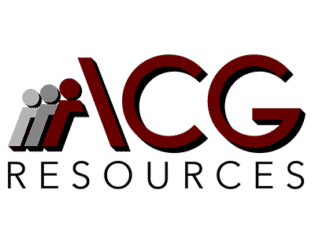The advent of remote work, technological advancements, and shifting employee expectations necessitates rethinking organizational culture to establish an efficient workflow fit for the new world of work.
Organizational culture, often defined as the shared values, beliefs, and behaviors within an organization, is pivotal in shaping its workflow and overall success. In the past, organizational culture may have been centered around physical presence in the office, strict hierarchies, and rigid processes.
However, the modern workforce demands flexibility, autonomy, and collaboration, prompting a fundamental shift in how we approach work culture.
Embracing Remote Work: The Rise of Flexibility
One of the most significant changes in the new world of work is the widespread adoption of remote work. The COVID-19 pandemic accelerated this trend, forcing organizations to adapt quickly to remote setups. While remote work has challenges, it offers numerous benefits, including increased productivity, cost savings, and access to a broader talent pool.
To establish an efficient workflow in this remote landscape, organizations must foster a culture of trust and autonomy. Micromanagement is only feasible and effective when teams are dispersed across different locations. Instead, leaders should focus on setting clear expectations, providing the necessary resources, and empowering employees to manage their time and tasks.
Moreover, technology plays a crucial role in facilitating remote collaboration and communication. Investing in project management software, video conferencing platforms, and cloud-based storage systems can streamline workflow and keep remote teams connected.
Cultivating Collaboration and Communication
Effective collaboration is essential for driving innovation and achieving organizational goals. However, in a remote or hybrid work environment, more than traditional methods of communication may be required.
To foster collaboration in the new world of work, organizations must prioritize open communication channels, encourage knowledge sharing, and create opportunities for virtual teamwork.
Leaders can promote collaboration by establishing clear channels for communication, such as instant messaging platforms, virtual team meetings, and collaborative project spaces. Fostering a culture of transparency and inclusivity encourages employees to share ideas, seek feedback, and collaborate across departments and locations.
Furthermore, organizations can leverage technology to facilitate virtual collaboration. Video conferencing, document sharing, and online brainstorming tools enable teams to collaborate in real-time, regardless of physical location. By embracing these digital solutions, organizations can break down silos, enhance productivity, and drive innovation.
Nurturing Employee Well-being and Work-Life Balance
In the new world of work, employee well-being and work-life balance are gaining increasing recognition as crucial components of organizational success. The traditional notion of productivity being synonymous with long hours in the office is replaced by a more holistic understanding of productivity that encompasses physical health, mental well-being, and work-life harmony.
Organizations can promote employee well-being by offering flexible work arrangements, promoting healthy lifestyles, and providing resources for stress management and mental health support. Encouraging breaks, setting boundaries around after-hours communication, and recognizing the importance of downtime is essential for preventing burnout and maintaining long-term productivity.
Moreover, fostering a supportive work culture where employees feel valued, respected, and appreciated can significantly impact their well-being. Recognizing and celebrating achievements, promoting a sense of belonging, and providing opportunities for personal and professional development contribute to a positive work environment where employees thrive.
Embracing Diversity, Equity, and Inclusion
Diversity, equity, and inclusion (DEI) are integral aspects of organizational culture that contribute to a more innovative, resilient, and productive workforce. Embracing DEI fosters employees’ sense of belonging and enhances creativity, problem-solving, and decision-making.
To cultivate a culture of diversity, equity, and inclusion, organizations must prioritize inclusive hiring practices, provide diversity training and education, and actively promote diversity at all levels of the organization. Creating diverse and inclusive teams fosters different perspectives, encourages empathy and understanding, and drives innovation.
Furthermore, organizations must address systemic biases and barriers that may hinder the advancement and inclusion of underrepresented groups. Organizations can create a more equitable and inclusive workplace by fostering a culture of belonging where all employees feel valued and empowered to contribute their unique perspectives.
Conclusion
The new world of work presents challenges and opportunities for organizations seeking to establish efficient workflows and foster a positive work culture.
By rethinking traditional approaches and embracing flexibility, collaboration, employee well-being, diversity, equity, and inclusion, organizations can adapt to the changing landscape and thrive in the digital age.
Building a culture that prioritizes trust, communication, and inclusivity lays the foundation for an efficient workflow where employees are empowered to succeed, innovate, and contribute to the organization’s long-term success.
As we navigate the complexities of the modern workplace, embracing change and investing in a culture that values people as its greatest asset will be essential for organizational resilience and growth.







